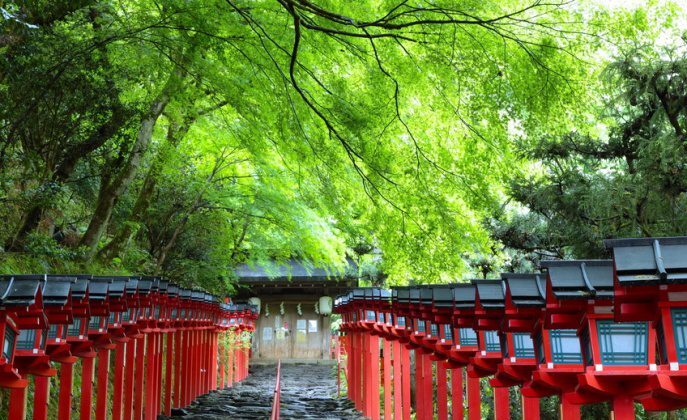Ask a non-Japanese what they associate with shrines in Japan. Chances are the answer will be either along the lines of “mysterious” or “controversy.” Senior Japanese politicians annually visit Yasukuni, the Tokyo shrine that houses the spirits of Japan’s war dead, and it never fails to provoke stinging rebukes from other Asian countries. It’s an unfortunate ritual.
But the Yasukuni controversy aside, what do shrines mean to the Japanese? What role do they play in our everyday lives?
Shrine significance
We Japanese believe that, after death, important people—leaders or people who’ve made a contribution to society—are transformed into gods and take up residence in a shrine. From there, they look after society. The first great shogun, Ieyasu Tokugawa, died in 1616, and the government of Edo (now Tokyo) had him enshrined at Toshogu in Nikko (now a World Heritage Site) so that his spirit could watch over the capital city from the mountains seventy-five miles to the north.
Shrines play a role in everyday life, as well. I got married at Meiji Shrine in Tokyo, where the Emperor Meiji, the first emperor of modern Japan, is enshrined. The whole family goes to Meiji Shrine every New Year to pray for luck. I took each of my five sons there a month after they were born, and again at the age of five. This custom is a holdover from the days when infant mortality was so high that making it to five was something worth thanking the gods for!
We live very near the controversial Yasukuni Shrine. In fact, my sons’ kindergarten uses the shrine precincts as their playground. In the spring, we, like many other families, go there to enjoy the beautiful cherry blossoms. In the summer, we all dress up in kimonos to attend the Mitama festival, when Yasukuni is full of stalls selling yakisoba (noodles) and takoyaki (octopus balls), as well as booths where kids can play fair-type games. Yasukuni Shrine is part of the everyday life of our family.
Shrines also have a relationship with business. Japanese salarymen traditionally visit Hie Shrine in Akasaka to pray for success in their ventures. At my company, we actually got the priest from Hie Shrine to come and pray for the prosperity of the firm before starting the construction of our present Tokyo office and campus.
Shrines are thoroughly integrated into the fabric of everyday Japanese life.
Religion without borders
One other admirable feature of religion in Japan is its total absence of exclusivity. The funeral of one of my grandfathers was held in a Buddhist temple, while the funeral of another was held in a church. Meanwhile, my father, who is a Christian, married my mother in a church. Personally, I identify as a Buddhist, but as I mentioned, my wedding ceremony was held in a Shinto shrine.
That’s three religions in the same family.
How can we be so accepting? The answer is that we Japanese believe that all religions lead to the same god in the end. That’s why we have never had—and never can have—any sort of religious war here.
In a world where religion can too often act as a fault line along which conflict breaks out, I think there’s something that the world can learn from Japan, for a change: a tolerant and inclusive approach to religion. We believe—and have proven—that shrines, temples, churches, and mosques can all exist harmoniously together.



